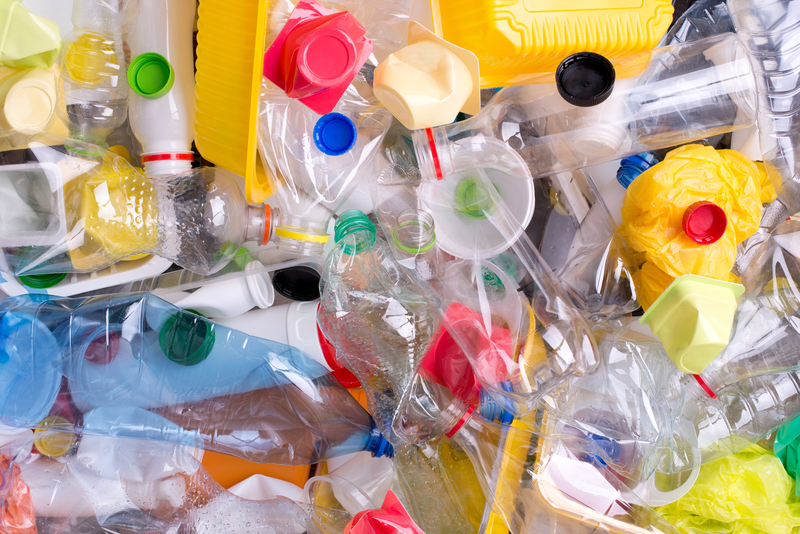Steer Clear of Harmful Plastics: A Comprehensive Guide to Safer Living
In today's world, plastics are everywhere--from the containers that hold our food and water, to the packaging of nearly every consumer product. But not all plastics are created equal, and some may pose significant risks to our health and the environment. Steering clear of harmful plastics is an essential step towards a healthier lifestyle and a safer planet. This article delves into why it's important to avoid toxic plastics, identifies the types you should watch out for, and offers practical solutions to help you transition to safer alternatives.

Understanding the Dangers of Harmful Plastics
Many modern conveniences are made possible by plastics, but some types contain chemicals that have been linked to health problems such as hormone disruption, cancer, and developmental issues in children. Furthermore, plastics can take hundreds of years to decompose, contaminating soil and waterways and harming wildlife.
What Makes Plastics Harmful?
- Leaching of chemicals: Certain plastics release harmful substances, like phthalates and Bisphenol A (BPA), into food, drinks, and the environment.
- Pollution and microplastics: As plastics break down, they form tiny particles called microplastics that infiltrate ecosystems--even ending up in the food we eat.
- Non-biodegradability: Plastics waste persists for centuries, leading to overflowing landfills and polluted oceans.
Avoiding harmful plastics is about much more than environmental responsibility--it's about protecting your health and the wellbeing of future generations.
Identifying and Avoiding Toxic Plastics: Know Your Resin Codes
Plastic products are usually identified by resin codes--those small numbers inside the triangular recycling symbol on the bottom of containers. These codes indicate the type of plastic used, and some are far less safe than others.
The Seven Resin Codes: Which Ones Should You Avoid?
- Plastic #1: PET or PETE (Polyethylene Terephthalate)
Commonly used for water and soft drink bottles. While considered safe for single use, it can leach antimony, especially when exposed to heat or reused. - Plastic #2: HDPE (High-Density Polyethylene)
Found in milk jugs and detergent bottles. Generally one of the safer plastics, but still not recommended for repeated food use. - Plastic #3: PVC (Polyvinyl Chloride)
*Avoid this plastic.* Used for pipes, food wraps, and toys. Can release phthalates and vinyl chloride, both linked to serious health issues. - Plastic #4: LDPE (Low-Density Polyethylene)
Used in grocery bags and some food wraps; considered relatively low risk but not suitable for high heat. - Plastic #5: PP (Polypropylene)
Found in yogurt containers and straws. One of the safer plastics, but not totally free from all concerns, especially under heat. - Plastic #6: PS (Polystyrene)
*Best to avoid.* Used for disposable cups, plates, and foam packaging. Can leach styrene, a potential human carcinogen. - Plastic #7: Other (Often Polycarbonate, including BPA)
*Most problematic.* Used in baby bottles, water coolers, and food containers. May contain BPA, a hormone disruptor.
To steer clear of harmful plastics, become familiar with these codes and choose products made with safer alternatives whenever possible.
Quick Reference List: Plastics to Avoid
- #3 (PVC): Avoid
- #6 (Polystyrene): Avoid
- #7 (Polycarbonate/BPA): Avoid
Health Risks Associated with Harmful Plastics
The chemicals found in certain types of plastics are linked to a range of health problems:
- Hormonal disruption: Chemicals like phthalates and BPA mimic hormones and can interfere with endocrine function.
- Reproductive issues: Exposure to toxic plastic compounds has been linked to reduced fertility and developmental issues in fetuses and children.
- Cancer risks: Some plastics leach substances that are considered carcinogenic, such as vinyl chloride from PVC and styrene from polystyrene.
- Immune system effects: Certain plastic additives can lower immune resistance, making the body more susceptible to illnesses.
Minimizing your exposure to harmful plastics is a smart move for anyone looking to safeguard their overall health and wellbeing.
Environmental Impact of Plastic Pollution
Besides health concerns, plastic pollution is a global crisis. Every year, millions of tons of plastic waste end up in landfills, rivers, and oceans. Over time, these plastics break down into microplastics--small plastic fragments that can be ingested by wildlife and contaminate entire food chains.
- Wildlife harm: Animals often mistake plastics for food, leading to injury or death.
- Ecosystem disruption: Plastic debris damages habitats and disrupts natural processes.
- Food safety concerns: Microplastics are now being found in seafood, tap water, and even salt--raising questions about human health.
By making better choices and steering clear of toxic plastics, we can reduce our footprint and help restore the balance of our natural world.
Simple Steps to Steer Clear of Harmful Plastics
1. Switch to Safer Alternatives
- Use glass or stainless steel: Opt for water bottles, food storage, and cookware made from these inert and durable materials.
- Choose silicone products: High-quality, food-grade silicone is a non-toxic alternative for baking mats, utensils, and baby items.
- Embrace natural fibers: Replace plastic wrap or sandwich bags with beeswax-coated cloth or paper-based solutions.
2. Avoid Plastic in Food and Drink
- Never microwave food in plastic containers--heat can increase the migration of harmful chemicals.
- Be cautious with canned foods, as many cans are lined with BPA-containing plastics.
- Say no to plastic water bottles: Bring your own refillable bottle instead.
3. Be Aware When Shopping
- Bring reusable bags and avoid plastic packaging whenever possible.
- Support brands that use eco-friendly packaging or offer plastic-free options.
- Look for "BPA-free" and "phthalate-free" labels, but remember that these terms aren't always regulated.
4. Reduce, Reuse, Recycle--and Rethink
- Reduce your overall consumption of disposable items.
- Reuse containers, but never use single-use plastics for long-term storage or reheating.
- Recycle according to local guidelines, prioritizing plastics marked as safe (#2, #4, #5).
- *Rethink* your purchasing habits: evaluate whether you really need a product made from plastic, or if a safer, greener option exists.
5. Protecting Children from Harmful Plastics
- Invest in high-quality, plastic-free toys and feeding products.
- Never use old baby bottles or toys that might contain BPA or other harmful chemicals.
- Launder baby clothing and bedding before first use to remove any residual chemicals.
FAQs: Your Questions About How to Steer Clear of Harmful Plastics
Q: Are "BPA-free" plastics safe?
While "BPA-free" plastics are marketed as safer, they may contain other bisphenols (like BPS or BPF) with similar health risks. The best strategy is to minimize all plastic use where possible.
Q: What is the safest plastic for food storage?
If you must use plastic, choose #2 (HDPE), #4 (LDPE), or #5 (PP), and avoid exposing them to heat or long-term sunlight. Whenever possible, switch to glass or stainless steel.
Q: How do I know if a product contains harmful plastics?
Check the resin identification code, ask the manufacturer, and look for certifications (like "BPA-free"). When in doubt, choose non-plastic alternatives.
Q: What are microplastics and why should I be concerned?
Microplastics are tiny fragments that result from the breakdown of larger plastics. They infiltrate water supplies and food chains, and may carry harmful chemicals into your body.

Taking Action: Moving Towards a Plastic-Safe Lifestyle
Now that you're equipped with knowledge, it's time to act. Every small decision matters--whether you're packing your lunch, shopping for groceries, or buying toys for your children.
- Start with easy swaps: Replace your plastic water bottle with stainless steel, or your food containers with glass.
- Educate your family about the importance of avoiding toxic plastics.
- Encourage your community and support regulatory policies aimed at reducing harmful plastic production and use.
Conclusion: Healthier People, Healthier Planet
By choosing to steer clear of harmful plastics, you're not just protecting yourself and your loved ones--you're also contributing to a cleaner, safer environment for everyone. As awareness grows, more companies will innovate and expand their offerings of non-toxic, sustainable goods. Let's all do our part to reduce our reliance on toxic plastics, embrace smarter choices, and pave the way for a healthier future.
Remember: Every step toward reducing harmful plastics in your life is one toward better health, less pollution, and a brighter future for our planet.
Further Resources
- Environmental Working Group: Plastics Guide
- Plastic Pollution Coalition
- SafeBaby: Dangerous Plastics
Make informed choices, and help friends and family understand why it's better for everyone to avoid toxic plastics for good!